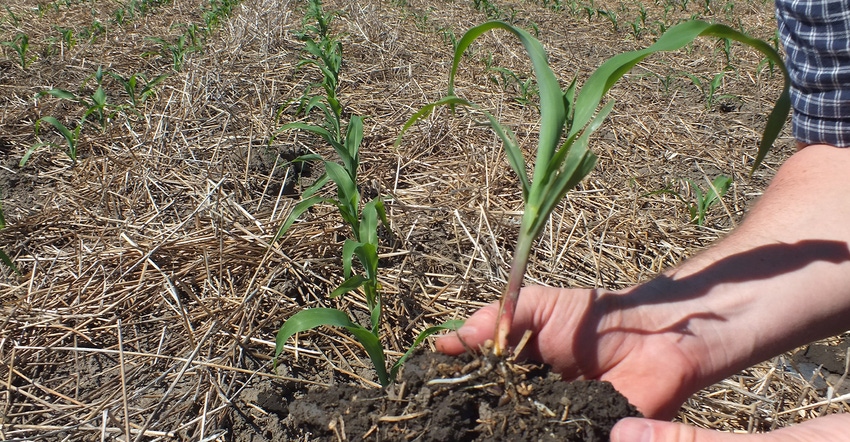
Is the fertilizer you applied on fields that you didn’t get planted still there?
The answer depends on which nutrients you are talking about, according to Jason Clark, South Dakota State University Extension soil fertility specialist.
Mobile Nutrients
The nitrate form of nitrogen (N) and sulfate form of sulfur (S) are both mobile in the soil and could have moved below the rooting depth of crops during the large rain events that occurred over the past growing season, Clark says.
They also could have been taken up by the cover crops or weeds in the prevent plant acres. The N taken up by these plants can become available for the next crop as the plant material decays. Further, plant available N can accumulate in fields where no plants were growing from organic matter decomposing in the soil, potentially increasing the nitrogen credit for the following crop.
Regardless of your specific prevent plant situation, Clark recommends taking a 2-foot soil sample (divided into 0-6 and 6-24 inch depths) to determine N and S needs for wheat, corn and other crops that require lots of N and S.
Clark advises waiting until after soil temperatures fall below 50 degrees F to take soil tests for N and S. The soil will likely continue gaining and losing N and S until the soil cools down.
Immobile nutrients
Phosphorus (P), potassium (K), and zinc (Z) are considered immobile nutrients. They move a little, but not as much as N and S.
“P, K and Z applied in the fall of 2018 will likely be available for next year’s crop and can be credited if plant material was not removed from the field,” Clark says.
Soil testing is a good idea. If soils are medium to low in P prior to the prevented planting and corn will be grown in 2020, Clark says to apply 20-30 pounds of P per acre as a starter.
Fallow syndrome
If you plant corn on prevent plant acres that were tilled to control weeds, then the corn may suffer from fallow syndrome, according to Adam Spelhaug, agronomist with Peterson Farms Seed, a regional seed company headquartered in Harwood, N.D.
Fallow syndrome occurs when small corn plants turn purple due to a P deficiency and the consequent buildup of excess sugars in the plant.
The P deficiency isn’t caused by a lack of P in the soil. It is caused by the lack of mycorrhiza fungi (VAM) in the soil. The fungi help corn and other plants take up P.
VAM fungi flourish in soil with the help of live plant roots. If there are no live roots for the fungi to live on, the VAM fungi populations decline dramatically.
The plants will usually grow out of the deficiency, but the yield potential will already be hurt.
To prevent fallow syndrome on corn, place additional P with the seed or near the row. Broadcasting additional P will not help, Spelhaug says.
He recommends a rate of about 30 pounds phosphorus per acre with the starter fertilizer.
Planting soybean instead of corn also is an option. Soybean is less susceptible to fallow syndrome than corn.
“Fallow syndrome is very manageable, but will take you by surprise if you haven’t experienced it,” Spelhaug says. “If not managed, it can rob your yield.”
About the Author(s)
You May Also Like






